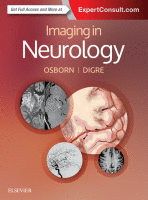Physical Address
304 North Cardinal St.
Dorchester Center, MA 02124

KEY FACTS Terminology Typically causes tuberculous meningitis &/or localized CNS infection, tuberculoma Imaging Basilar meningitis + extracerebral TB (pulmonary) Meningitis + parenchymal lesions highly suggestive Tuberculomas Supratentorial parenchyma most common Usually T2 hypointense Enhances strongly (solid or ring enhancing) Tuberculous…

KEY FACTS Terminology Acute cerebellitis Imaging Bilateral cerebellar hemispheric gray and white matter low attenuation (NECT), T2/FLAIR hyperintensity (MR); unilateral involvement less common Confluent regions of T2 prolongation, affecting gray and white matter ± pial or subtle parenchymal enhancement DWI/ADC…

KEY FACTS Terminology Diffuse brain parenchymal inflammation caused by variety of pathogens, most commonly viruses Location dependent on etiology Imaging Abnormal T2 hyperintensity of gray matter ± white matter or deep gray nuclei Large, poorly delineated areas of involvement common,…

KEY FACTS Terminology West Nile virus (WNV), West Nile fever, West Nile neuroinvasive disease Mosquito-transmitted acute meningoencephalitis Imaging Head CT usually normal MR with DWI, T1 C+ Classic: Bilateral basal ganglia, thalamic hyperintensity Patchy, poorly demarcated hyperintense foci in cerebral…

KEY FACTS Terminology Encephalitis caused by human herpes virus 6 (HHV-6) Imaging Immunocompromised patient with abnormal signal medial temporal lobe(s) Limbic system: Hippocampus, amygdala, parahippocampal gyrus Insular region, inferior frontal lobe involvement less common than herpes simplex encephalitis Atypical pattern…

KEY FACTS Terminology Brain parenchyma infection caused by herpes simplex virus type 1 (HSV1) Typically reactivation in immunocompetent patients Imaging Best imaging clue: T2/FLAIR hyperintensity of limbic system (medial temporal and inferior frontal cortex) with DWI restriction Typically bilateral disease,…

KEY FACTS Terminology Collection of pus in subdural or epidural space, or both (15%); subdural much more common Subdural empyema (SDE), epidural empyema (EDE) Imaging Best diagnostic clue: Extraaxial collection with enhancing rim, DWI positive Supratentorial typical EDE: Often adjacent…

KEY FACTS Terminology Ventricular ependyma infection related to meningitis, ruptured brain abscess, or ventricular catheter Imaging Best imaging clue: Ventriculomegaly with debris level, abnormal ependyma, periventricular T2/FLAIR hyperintensity DWI Restriction of layering debris with low ADC is characteristic T1WI C+…

KEY FACTS Terminology Focal pyogenic infection of brain parenchyma, typically bacterial; fungal or parasitic less common 4 pathologic stages: Early cerebritis, late cerebritis, early capsule, late capsule Imaging Ring-enhancing lesion with T2 hypointense rim and central diffusion restriction characteristic Imaging…

KEY FACTS Terminology Acute or chronic inflammatory infiltration of pia, arachnoid, and cerebrospinal fluid (CSF) Classified as acute pyogenic (bacterial), lymphocytic (viral), chronic (tuberculosis or granulomatous) Imaging Imaging best delineates complications: Empyema, ischemia, hydrocephalus, cerebritis/abscess, ventriculitis FLAIR MR: Hyperintense signal…